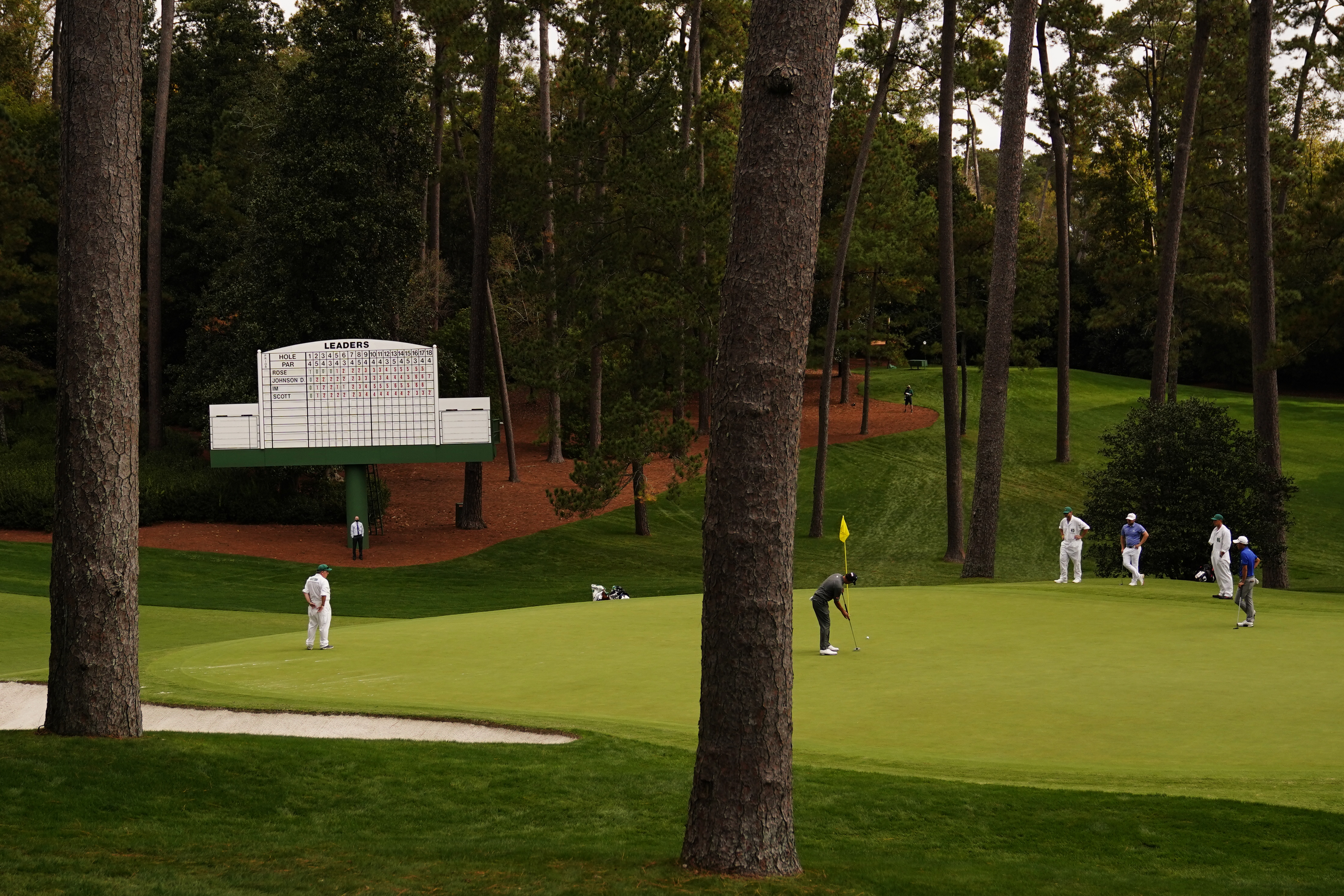What happened to Barcelona and Real Madrid? How they lost Messi and Ronaldo – and slipped from the world's summit
Barcelona play Europa League football tonight for the first time in over a decade, as both they and rivals Real Madrid are finally having to contend with years of overspending. This is how Spanish football started to struggle
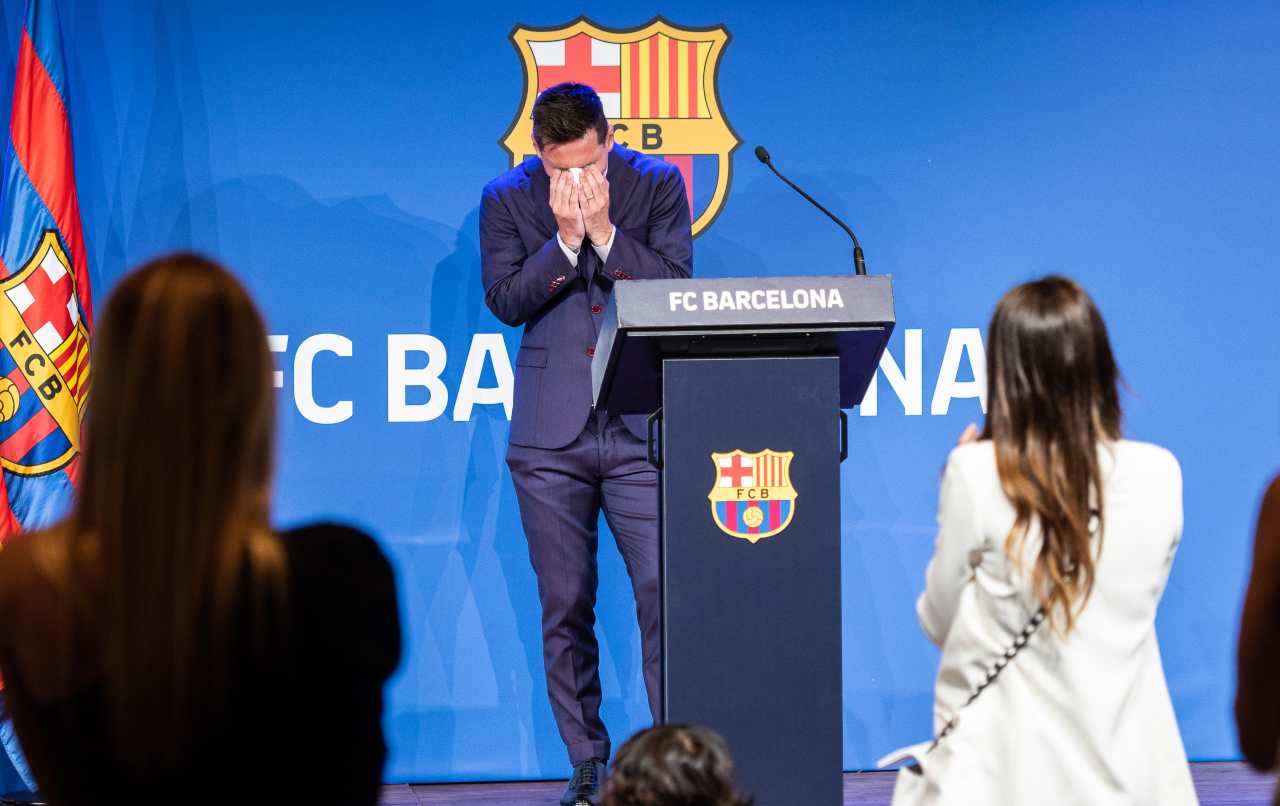
This feature on Barcelona and Real Madrid is an updated and edited version of an article that first appeared in the September 2021 issue of FourFourTwo. Subscribe now!
The tweet is still there, more than four years after Gerard Pique sent it, in memoriam of a decaying dynasty.
At 9.55pm on July 23, 2017, the centre-back took a selfie with his Barcelona team-mate, Neymar, and captioned it with the now infamous legend: Se queda. He’s staying.
Se queda. pic.twitter.com/RtPHUr9iTHJuly 23, 2017
Only he wasn’t. A week and a half later, Neymar moved to Paris Saint-Germain, the Ligue 1 runners-up anxious to prove they were more than nouveau-riche arrivistes. On August 3, PSG paid the Brazilian’s world-record €222 million release clause, in full, and there was nothing Barcelona could do to stop them.
Barely 12 months later, Cristiano Ronaldo left Real Madrid for Juventus. He had just steered Los Blancos to a third successive Champions League triumph – their fourth in five seasons, La Liga’s fifth in a row, and the league’s seventh in a decade.
In the three years since, no Spanish side has even reached the showpiece of Europe’s premier club competition, let alone won it. In two of those three seasons, La Liga had a single representative in the last eight. The Premier League has produced two winners, two losing finalists and an additional four quarter-finalists in that period. For the first time in nine years, it has overtaken La Liga at the top of UEFA’s country coefficient.
Barcelona realised far too late that their natty post-Neymar purchases came without a warranty. Real Madrid have erred in the transfer market, too, while belt-tightening has resulted in exits for Ronaldo, Sergio Ramos and Raphael Varane, as well as the departures of would-be stars Achraf Hakimi and Sergio Reguilon. The era of Florentino Perez’s spendthrift Galacticos is long gone.
Get FourFourTwo Newsletter
The best features, fun and footballing quizzes, straight to your inbox every week.
Then came the bombazo – the massive bomb. On the evening of August 5, 2021, Barcelona released a statement saying Lionel Messi would end his 21-year stay at the Camp Nou as it was “impossible” to re-sign the Argentine because of “financial and structural obstacles (Spanish Liga regulations)”. The greatest Blaugrana player in history would leave for no fee. Messi had offered to reduce his wages by half to stay at the club of his heart, but Barça couldn’t make the numbers work – not that it was their fault, as their use of brackets made plain.
How did it come to this? Is this temporary pandemic-induced mismanagement, or the new reality? Is La Liga now circling the drain?
The hunger games
There was nothing that Barcelona could do. Lawyers arrived at La Liga’s headquarters with the cash necessary to meet their star’s release clause and rescind his Blaugrana contract. Their pride wounded, the Catalans were determined to immediately reinvest the world-record fee with a decisive statement of intent. They would sign two of Europe’s most in-form players, no matter the cost, but would ultimately pay for their avarice.
First it was Marc Overmars for €40m, and then came Emmanuel Petit for €14m.
“History has repeated itself: this is exactly what happened after Real Madrid paid up Luis Figo’s release clause in 2000,” laments Alfredo Martinez, who commentates on every Barcelona encounter for radio station Onda Cero. “The day Neymar left in August 2017 is a ‘before’ and ‘after’ moment in Barça’s history. They had all this money but no plan for how to use it. Clubs saw them coming. If they had just paused and waited a year, then this would have been a club with the best economic backing in the world. Not only did they not do this, they spent badly, producing an outlay they can no longer pay. It’s now impossible, totally impossible, to continue down that route.”
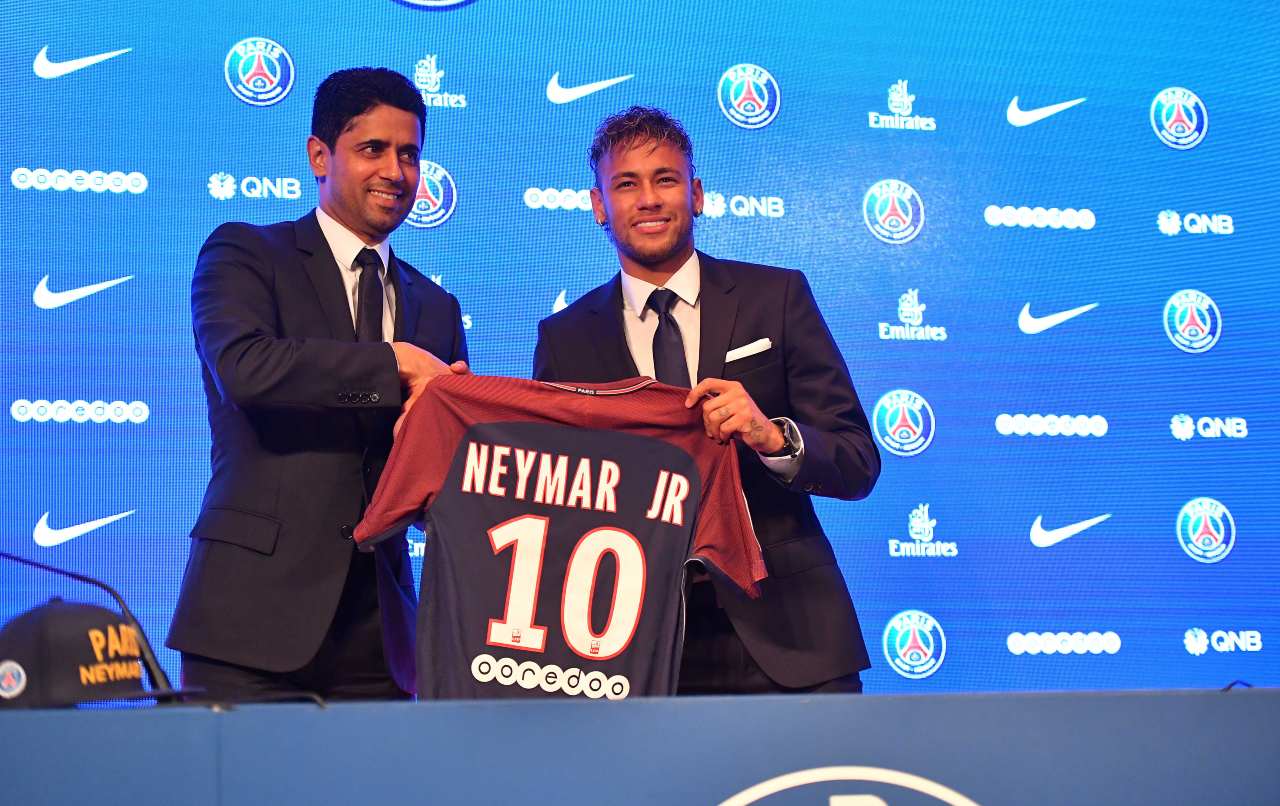
Desperate to be remembered as the most successful Barça president of all time, having been at the helm for the 2014/15 Champions League triumph, Josep Maria Bartomeu spent like a toddler let loose in a sweet shop with mummy’s plastic. In 2017/18, he dropped an initial €105m and €120m on Ousmane Dembele and Philippe Coutinho respectively; the next season, it was €35m on Clement Lenglet, €31m on Arthur and another €41m on Malcom, who made 24 outings before being sold to Zenit (albeit for roughly the same fee) 12 months later. Last summer’s spending was more circumspect, but only after Bartomeu had plurged €273m on seven players in 2019/20, including Antoine Griezmann, Frenkie de Jong and reserve goalkeeper Neto.
Griezmann has had his moments, but only De Jong could be described as a post-Neymar success of any kind. Bartomeu, who runs the family business making jet bridges that take passengers from plane to airport terminal, even gave Luis Suarez to Atletico Madrid for free. ‘El Pistolero’ promptly won the league.
“Bartomeu is the guy with blood on his hands,” says Martinez. “He let this situation get out of control and left the club standing naked with no idea what to do. His board took us to the very limit where we’re bleeding on the street, about to die.”
The club is more than €1.35 billion in debt and needed a €525m Goldman Sachs loan last winter to help restructure their finances. Having won La Liga in 2017/18 and 2018/19, Barça claimed only a single Copa del Rey in the two most recent campaigns. Then there were the Champions League defeats: 3-0 to Roma, 4-0 to Liverpool, 8-2 to Bayern Munich.
Even in times of apparent feast, they were still spending 70 per cent of their budget on wages. In 2011, then-president Sandro Rosell banned colour photocopying in order to save money. Incumbent Joan Laporta – back after a trophy-laden first presidential spell from 2003 to 2010 – has admitted that wages are as high as 110 per cent of turnover.
“When you’ve got money, the easy thing to do is spend it,” says Martinez. “There’s a pressure for immediate success and that’s where Barça failed. ‘Pan para hoy, hambre para mañana’ – bread for today, hunger for tomorrow. If the club had approached this calmly, like a more normal club, you say, ‘OK, maybe we don’t win anything this year, but that proves that we actually need guys like Dembele or Coutinho’.”

Real Madrid’s financial situation is similar but not quite as pressing. Los Blancos had a €120m surplus when the pandemic hit, and president Florentino Perez has focused on redeveloping the Bernabeu rather than investing in the playing squad. In 2019, the summer after Ronaldo’s sale, Perez spent more than €350m on players including Eden Hazard (€100m, rising to €146m), Luka Jovic (€60m), Eder Militao (€50m), Ferland Mendy (€48m) and 18-year-old Rodrygo (€45m) – but that is the club’s only extravagant window of late.
In the summer of 2020, Real Madrid spent nothing at all on new additions. The result? A trophyless season and Zinedine Zidane – the three-time Champions League-winning coach, and the fans’ darling in an otherwise underwhelming campaign – resigning upon learning that he wouldn’t be backed in the transfer market for a second year running.
“Any Real Madrid season without a trophy is a fiasco,” Radio Marca host Rafa Sahuquillo insists to FFT. “Zidane left more because of fatigue and exhaustion at dealing with the club. He had come back and won La Liga in 2019/20, but didn’t get the support of the president last season, especially after losing to third-tier Alcoyano in the Copa del Rey.”
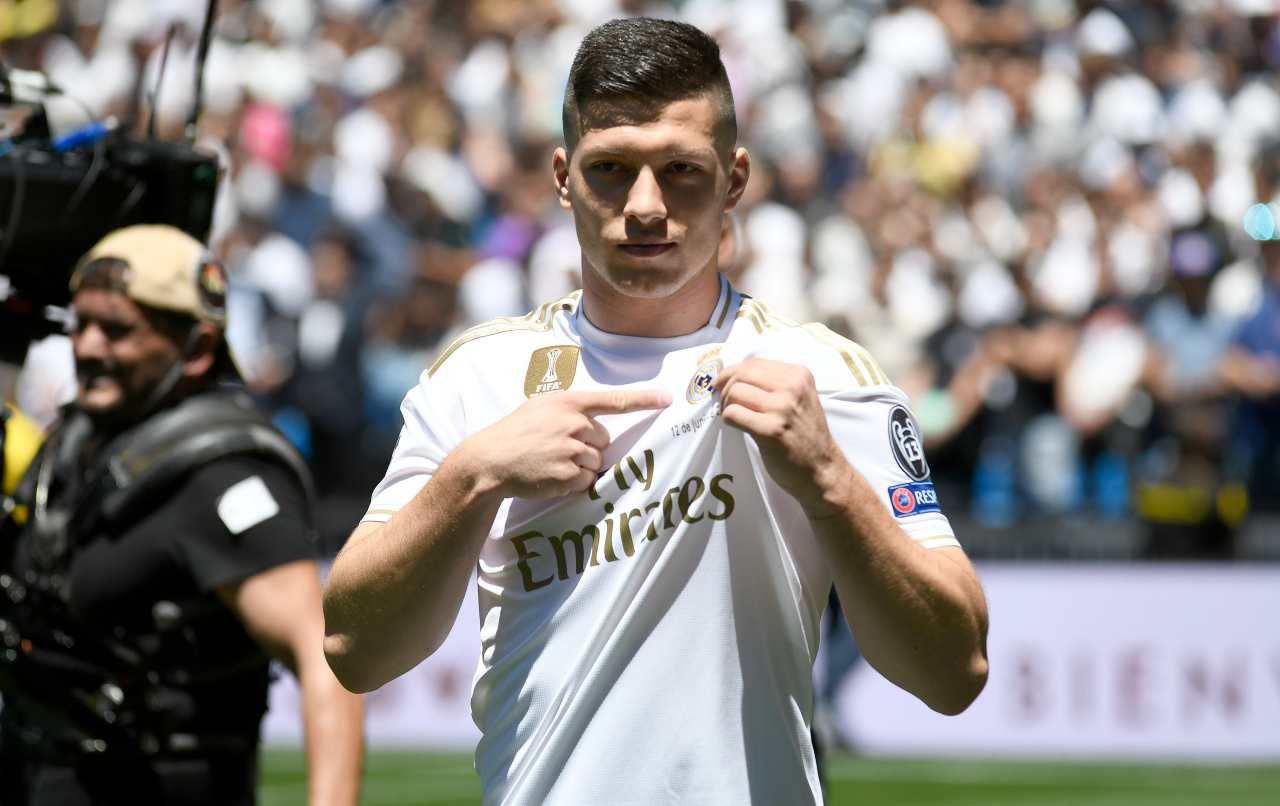
All of which means Cristiano Ronaldo was never replaced, and La Liga – shorn of the Messi vs CR7 Clasico which defined it for over a decade – now lacks lustre. Due to strict Spanish tax rules imposed after the financial crash in 2008, the Premier League and even Serie A are far more financially attractive. If Kylian Mbappe ends up at Real Madrid, it’s because he wants to be there.
Of the top 10 in the last Ballon d’Or vote of 2019 (last season’s poll was cancelled), only Messi plied his trade in Spain. In the summer 2020 transfer window, La Liga clubs forked out €348m, behind Ligue 1 (€474m), Serie A (€667m) and the Premier League (€1.5bn).
“There’s a definite talent drain from La Liga,” says Sahuquillo. “Players who dominated and defined an era, such as Cristiano, just aren’t here any more. Karim Benzema is a superb, complete team player, but the voracity that Cristiano had in attack for the most important European games is what Real Madrid have missed the most. If Villarreal hadn’t won the Europa League, last season would have been an utter disaster.”
A Messi situation
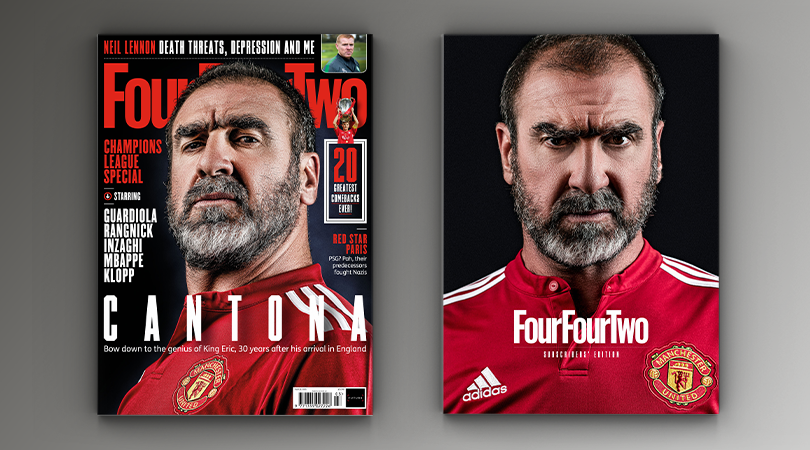
La Liga’s decline is partly self-inflicted. The story of the summer has been Barcelona’s ham-fisted attempts to reduce their outgoings in line with La Liga’s wage cap, and subsequent inability to register players – Messi included. The cap was introduced in 2013 as president Javier Tebas tried to force clubs to live within their means. The rules are strictly enforced.
The pandemic hit Barça harder than most, as a significant proportion of the Catalans’ income comes from matchday revenue. This includes ticket sales, stadium tours, the club shop and the museum. Exacerbated by the fallout from COVID-19, the wage caps are ever-lowering: in 2019/20, Barcelona’s was €671m, but last year it was virtually halved to €371m, and it is expected to fall again to €200m – perhaps, even, below €80m – for 2021/22. Not only couldn’t they register new signings in Sergio Aguero, Eric Garcia, Memphis Depay and Emerson – the first three of that quartet all arriving on frees – but they couldn’t re-register Messi, either.
Last summer, the Argentine’s relationship with Bartomeu irretrievably broke down, and Messi announced his intention to leave the Camp Nou after more than two decades, even telling his children that they would be leaving the family’s beloved home in seaside Castelldefels. He changed his stance after Laporta’s presidential return, and in early July both parties had all but agreed a new five-year deal with a 50 per cent pay cut. Yet, even with Messi’s annual salary dropping from around €45m basic (after tax) to nearer €20m, it still wasn’t enough. More players would have to leave, and more would have to follow De Jong, Pique and Marc-Andre ter Stegen in taking wage cuts.
Worse still, it wasn’t a case of save/sell one Euro and reinvest it. A month before La Liga’s kick-off, Barça were around 40 per cent over their La Liga wage cap, meaning they could reinvest only 25 per cent of all fees received.
And so Junior Firpo went to Leeds for €15m, Jean-Clair Todibo to Nice for €8.5m and Carles Alena to Getafe for €5m, while Wolves took Francisco Trincao on loan with a €25m option to buy – roughly what Barcelona paid for him in 2020. But these amounts were a drop in the ocean for what was needed.
“Laporta’s [below] biggest problem isn’t just the financial crisis, but that other clubs know about the crisis,” says Onda Cero’s Martinez. “If you sign Aguero or Depay, then the big clubs in England, Italy, Germany and France know you have to sell, so they’re expecting Barcelona to get in touch – but they all have conditions because Barça’s card is marked.”
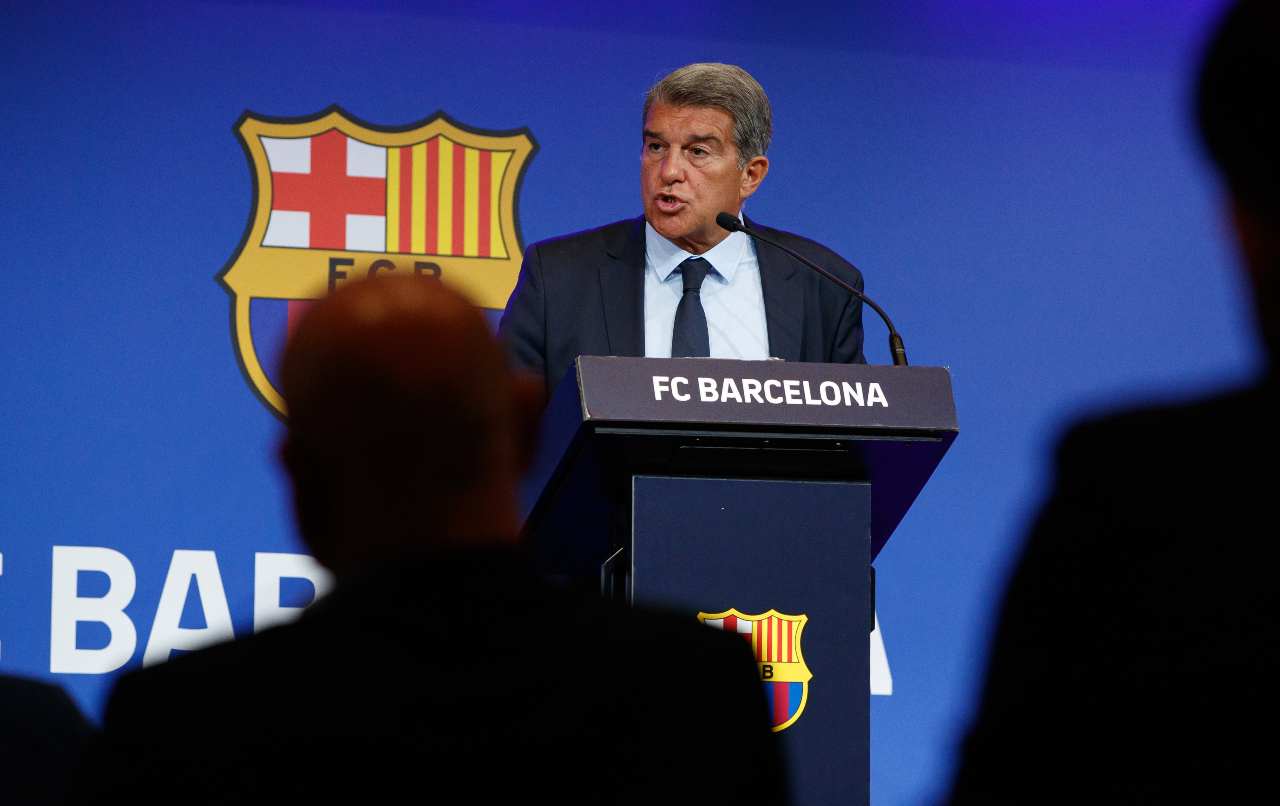
Flogging Griezmann alone wouldn’t solve the problem. The World Cup winner’s €20m yearly salary isn’t in the club’s top four, and the €70m still left in amortised payments owed to Atletico Madrid weighs heavily because Barça need a big fee to pay those off. All clubs now spread transfer fees over the length of the new player’s contract, but Barcelona have proven cuter than most. Last summer’s €70m arrival, Miralem Pjanic, was effectively swapped for Arthur at Juventus so both outfits could circumvent respective amortisation costs in the short-term. “There is something immoral about that transfer,” Martinez tells FFT. “It’s absurd.”
As Barcelona went to such great lengths to balance their books, was Messi’s almost prohibitive cost actually worth it?
“People don’t seem to understand that Messi was actually the cheapest player in Barça’s squad,” counters Martinez. “Messi’s presence alone brings in 30-40 per cent of a club’s income. Even the cheapest player in the squad, who earns €2m a year, will still be more expensive than Messi. And this is before you get to him being the best player in the world. He was still La Liga’s top scorer last season and one of its best assisters.”
La Liga, however, weren’t budging.
“We can’t make an ad-hoc rule for Messi,” said league chief Tebas. “The rules are what they are. The efforts made by Barcelona to reduce their salary bill are on the right track, but the rules have to be complied with.”
Those rules put pressure on all teams – to such an extent that, on August 4, a 12-club committee consented to sell 10 per cent of La Liga to US venture capitalists CVC for €2.7bn in a 50-year deal. Ninety per cent would be shared among 42 Primera and Segunda Division clubs. Barcelona’s share was worth €280m, but they and Real Madrid were so worried about giving up 10 per cent of broadcast money until 2071 – especially given the recently-signed $1.4bn US TV deal with ESPN – that they opposed it. Besides, only 15 per cent (about €42m) of Barça’s share could be used on transfers or salaries – and agreeing to the deal would also end both clubs’ hopes of setting up the European Super League.
That’s when Barcelona dropped the bomb. The only way to comply was to not sign Messi. Some thought it was brinkmanship, to force Tebas into raising the wage cap, especially as Real Madrid announced they were taking legal action over the CVC deal just moments after Barça’s Messi statement. Would La Liga really allow its biggest star to leave? Laporta was unequivocal.
“We cannot formalise our deal with Messi,” he stated. “La Liga won’t increase the wage cap; the only way is to mortgage part of the TV rights for half a century. Messi wanted to stay, we wanted him to stay, but it comes with certain risks, which we can’t impose on the club. The job the previous board did was terrible. One thing is the numbers presented to us initially, now we have realised the situation is even worse.”
The president – a self-confessed dreamer now facing grim reality – confirmed that even without Messi’s salary, Barça were spending 95 per cent of turnover on wages, and made losses of €487m last year. He could, at least, finally register Aguero, Memphis, Emerson and Garcia, but only after Pique – looking ever-more presidential himself – took another sizeable pay cut before the opening day of the season in mid-August. He also scored in a 4-2 win against Real Sociedad.
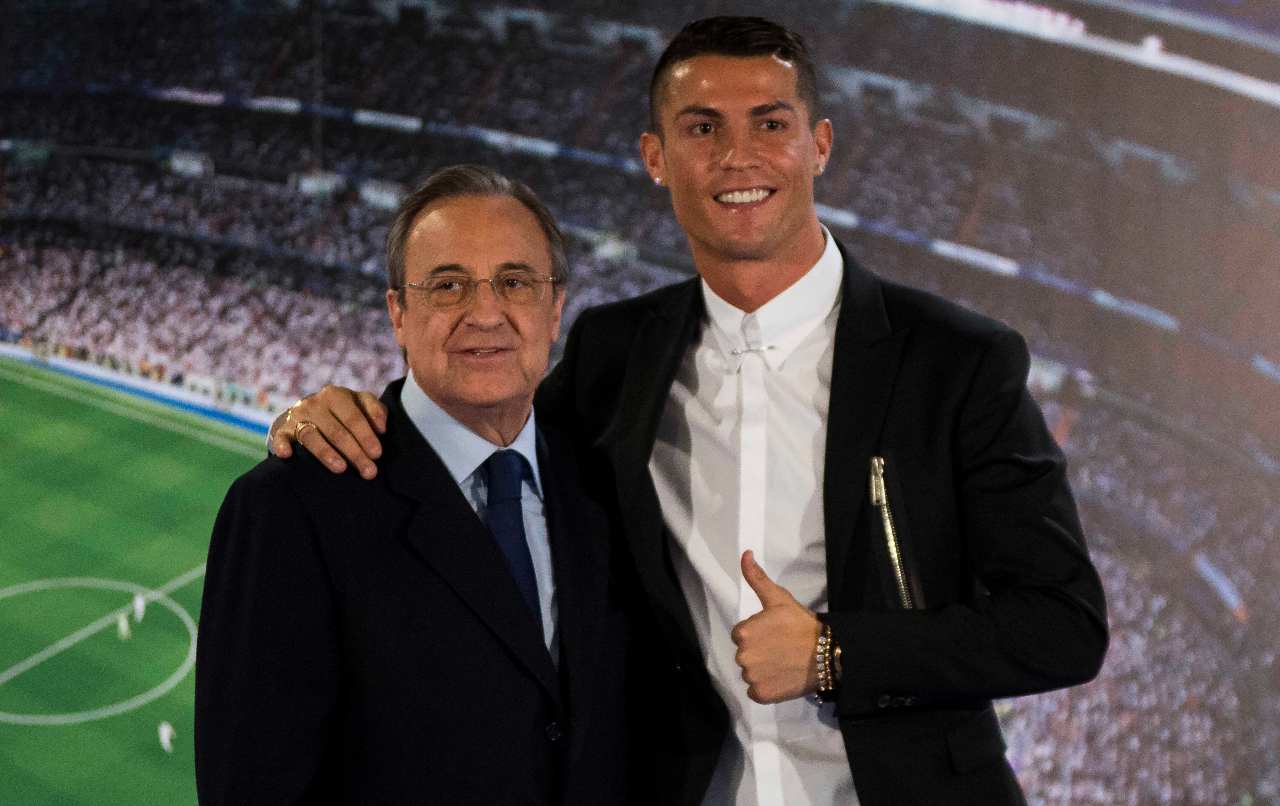
One FFT source says Real Madrid are more in favour of the salary cap than you’d think. Their belt-tightening began pre-pandemic, with Ronaldo’s sale. Perez is a businessman first and football man second; someone who sees his players as ever-depreciating assets. Sergio Ramos joined PSG on a free transfer this summer, having refused to take a 10 per cent wage cut. Fellow club icons, Iker Casillas and Raul, were also discarded without ceremony.
However, Los Blancos simply aren’t the same without the preening Portuguese slab of athletic perfection battering records like a Scottish chippy.
“Cristiano wanted to earn the same as Messi and be treated like the superstar within the club – Perez doesn’t take kindly to that sort of ultimatum,” explains Sahuquillo. “Have they missed him? Of course! Who wouldn’t miss 50 goals per season? Cristiano left because he was a major force in the dressing room and if his wages rose, so would Ramos’ wages, and Bale’s. Perez couldn’t support that.
“Florentino doesn’t like a certain type of personality in the club. He learned from his first spell in charge that having a handful of superstars who rule the dressing room isn’t a good thing. No one can be more important than the club president.”
Unlike their Catalan rivals, Real Madrid have favoured potential – Militao, Rodrygo, Vinicius Junior and Jovic were all aged 18-21 – over players at their peak. Bale and Hazard made them think twice, especially as the duo make up 13 per cent of the club’s wage bill.
“Tebas has done a decent job in restricting the unlimited fuel that top La Liga clubs used to have,” admits Sahuquillo. “Most will have to find savings this summer, or move players on to readjust the figures. He has applied the cap well, because situations such as Barça’s are worrying for the biggest clubs.”
“Spanish clubs can’t compete now”
The wage cap has already had a knock-on effect on La Liga. Once, Barcelona and Real Madrid would each rack up 90 to 100 points; the 2020/21 season, though, was one of the most competitive in recent memory. Just six points separated the top four sides with two games to go, and Sevilla ended up posting a club-record tally for the campaign (77).
“Now, Madrid and Barça know they can’t make a mistake,” declared Diego Simeone, after guiding Atletico to the title. “Transition happens to everyone, even Real Madrid and Barcelona, because age comes at all of us.”
That transition is why his team’s title win feels different to their immense achievement in 2013/14. Yes, La Liga is more competitive, but the same quality is missing.
“I don’t want to take too much away from Sevilla’s excellent season, but it’s down to the big two’s mistakes, not others improving significantly,” says Martinez of Onda Cero. “The league is fairer now, but los grandes will always be los grandes.”
Radio Marca’s Sahuquillo agrees, adding, “The overall level has dropped – it’s more competitive, but that doesn’t make it better.”
It has made for some European difficulties. Last term, Chelsea dominated both Madrid teams en route to Champions League glory and Barça lost 4-1 at home to PSG.
“Spain can’t compete with other leagues now,” continues Sahuquillo. “What I’d like to see is a financial regime which allows us to keep a competitive domestic league, but makes us more attractive to the world’s top players than Spain is at the moment. I can’t shake the feeling that the Premier League has overtaken La Liga. It’s been failure after failure in the Champions League since 2018. Spanish sides are definitely weaker in Europe than we’ve seen for a long time.”
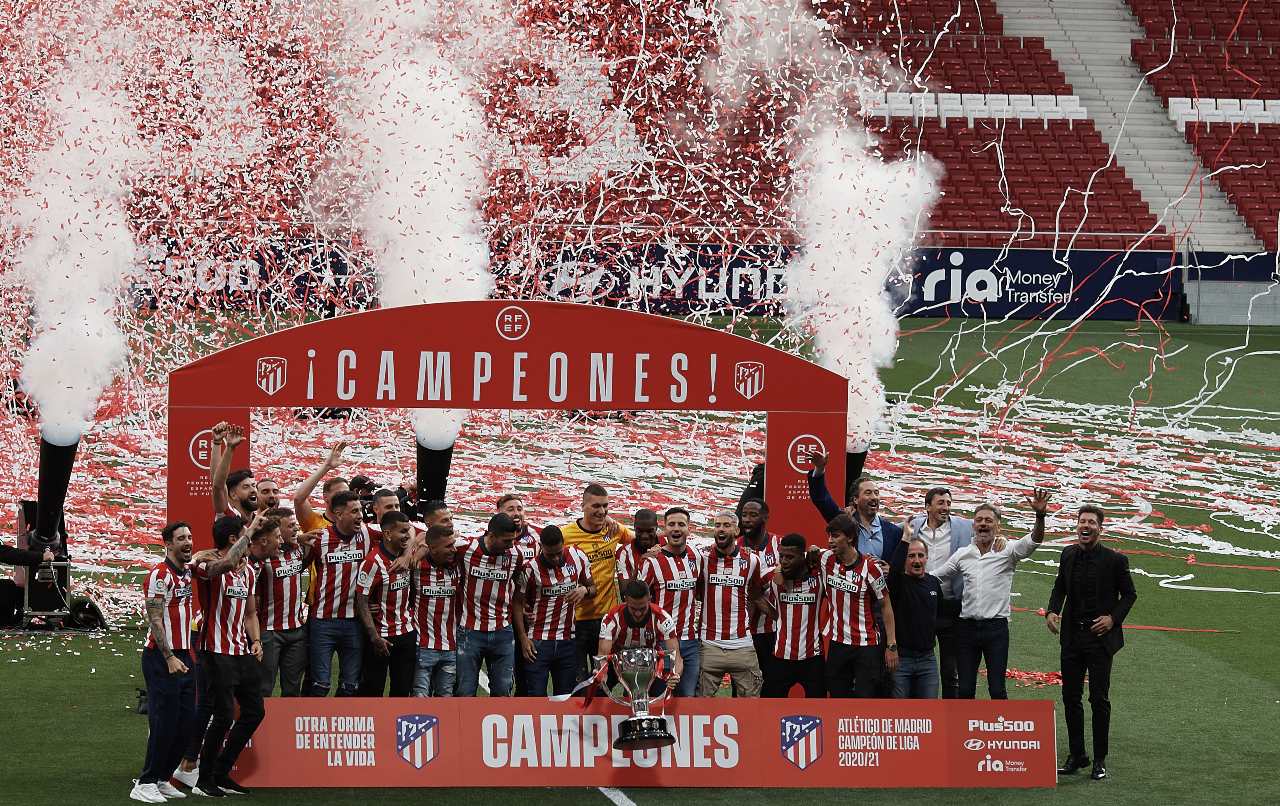
Was it all that surprising, then, that Real Madrid and Barcelona – used to riding roughshod over mere financial mortals – stuck to the European Super League project despite the wheels coming off in spectacular fashion? Both clubs need the guaranteed €300m to afford further luxury purchases.
“There’s no doubt that financially it makes sense, which is why Perez is so keen,” says Sahuquillo. “Mbappe arrives straightaway.”
For one side, La Liga’s decline is threatening their very existence. Valencia have lurched from crisis to crisis for much of the past 10 years. The debt brought on by a high wage bill and trying (and failing) to build a Nou Mestalla is spiralling. They had a fire sale last summer just to make the start line: Ferran Torres joined Manchester City, and their best midfielders, Francis Coquelin and Dani Parejo, moved to local rivals Villarreal.
The 2019 Copa del Rey winners, in the Champions League as recently as 2020, are now relegation contenders. If they were to go down, Los Che would be circling the drain.
“Valencia’s biggest problem is Peter Lim,” Sahuquillo tells FFT. “He believes he can run Valencia from Singapore. He’s destroying a structure which, even in difficult off-field moments, was working. They’re playing with fire, with a crazy project of different coaches every year, signing fewer players but selling a lot more, and now relegation is a very real possibility. That simply can’t happen.”
So, where does all of this leave La Liga? Is Spain in danger of a fall from the top, à la Serie A? “If we keep losing important players, then yes,” says Sahuquillo, bluntly.
Newly frugal Real Madrid embody the newly self-aware league. By early August, free agent David Alaba was the only fresh addition to Carlo Ancelotti’s squad. The Italian must trim a squad of 30 to 25 and assess if he can get a tune out of Gareth Bale, with mere months on the Welshman’s €15m-a-season contract.
“There are a lot of unknowns at Madrid,” says Sahuquillo, who thinks things could get worse before they get better, ideally with Mbappe to arrive in 2022. “Ancelotti actually got the best version of Bale at Madrid.”
As for Barcelona, who knows anymore? “This is the hardest moment of my career – I wasn’t ready to leave Barça,” wept a teary Messi at his farewell press conference. “We were convinced we were continuing here, at home.” Home is now PSG, alongside Neymar, this story’s ground zero, and Sergio Ramos. How’s that for irony?
“It’s a sad day for the club and La Liga,” says Martinez. “They’ve lost the biggest figure of the last decade and can’t guarantee being able to register their own players. That’s the crude reality in 2021/22.”
Lionel Andres Messi is no longer a Barcelona player and it’s all their own fault. No man, we are regularly told, is bigger than a club, but what about a league?
Subscribe to FourFourTwo today and save over a third on shop price
Restock your kit bag with the best deals for footballers on Amazon right now
ALSO READ
QUIZ Can you name the top 100 appearance makers in Champions League?
LIST Football Manager 2022: All the FM22 wonderkids you'll need to sign
Andrew Murray is a freelance journalist, who regularly contributes to both the FourFourTwo magazine and website. Formerly a senior staff writer at FFT and a fluent Spanish speaker, he has interviewed major names such as Virgil van Dijk, Mohamed Salah, Sergio Aguero and Xavi. He was also named PPA New Consumer Journalist of the Year 2015.
